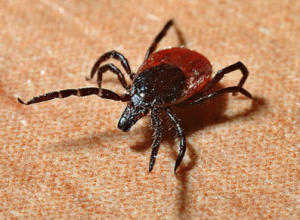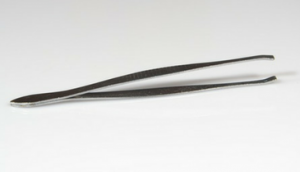
5 Issues to Know About Ticks & Your Canine
[ad_1]
2017 is predicted to be one of many worst tick seasons in latest historical past. Have you learnt what dangers ticks pose to your canine? Would you realize what to do when you discover a tick in your canine? Right here’s 5 issues to learn about ticks & your canine.
Canine Are Vulnerable to A number of Tick-Borne Illnesses
Tick borne illnesses are a menace to people and pets. Tick-borne illnesses are transmitted when a tick attaches itself to a number and begins feeding on blood. Every species of tick is thought to hold totally different illnesses, and people fluctuate by area. The commonest tick-borne illnesses that have an effect on canines in america are:
A few of these illnesses, akin to Ehrlichiosis attributable to the Brown Deer Tick, are discovered worldwide. Others are present in geographic clusters, such because the excessive prevalence of Lyme Illness within the Northeast and higher Midwest.
Establish a Tick
 Ticks are small arachnids, and together with mites they represent the subclass Acari. They’re exterior parasites that stay by feeding off of the blood of their hosts, sometimes mammals and birds.
Ticks are small arachnids, and together with mites they represent the subclass Acari. They’re exterior parasites that stay by feeding off of the blood of their hosts, sometimes mammals and birds.
Ticks are available in varied sizes, and whereas many are seen to the bare eye some may be as small as the highest of a pin. They are often brown, tan or black in shade. They’ve tear formed our bodies, however when engorged they’ll seem spherical.
You may try the regional tick identification information for extra pictures and data relating to figuring out particular person species of ticks.
Examine Your Canine for Ticks
Ticks may be discovered anyplace in america, however they’re extra frequent in wooded areas. In contrast to fleas they don’t bounce onto their host, they crawl. In case your canine spends any time open air (together with simply chilling out within the yard) it’s essential to verify them for ticks.
To verify your canine you’ll wish to run your arms (or use a comb) over her complete physique, checking for any bumps or indicators of swelling. Ticks are drawn to darkish locations, so keep in mind to verify in crevices akin to:
- between their toes
- underneath their armpits
- round their ears
- underneath their collar
- round their groin
Ticks will journey from one host to a different if given the possibility, so when you do discover a tick in your canine be sure you verify everybody within the household as nicely.
Canine That Spend a Lot of Time Outdoor Ought to be Checked Every day for Ticks
In case your canine spends plenty of time open air, or when you stay in a wooded space they need to be checked day by day for ticks. Tick-borne diseases take just a few hours to be transmitted, so by checking recurrently you’ll be able to assist minimize down on the danger of them getting sick. For those who stay in a extremely infested space, or in case your canine spends plenty of time open air you might wish to ask you veterinarian about tick preventatives.
Take away a Tick From Your Canine
 After you discover a tick in your canine you’ll wish to take away it as quickly as doable. The longer a tick stays in your canine the extra possible they’re to transmit diseases or illnesses.
After you discover a tick in your canine you’ll wish to take away it as quickly as doable. The longer a tick stays in your canine the extra possible they’re to transmit diseases or illnesses.
What you’ll have to take away a tick out of your canine:
- pair of rubber or latex gloves
- pair of tweezers or tick remover
- container with rubbing alcohol
To take away a tick out of your canine you’ll want a pair of latex gloves and a pair tweezers or a tick remover. Seize the tick by the pinnacle (as near the pores and skin as doable) and pull the tick out firmly and steadily with out squeezing the physique. After the tick is eliminated clear the chew space totally.
Removing of a tick must be executed fastidiously. Squeezing too exhausting you’ll be able to break them in half, leaving the remainder of them hooked up to your canine’s pores and skin.
What to Do After You Eliminated a Tick On Your Canine
After you’ve pulled the tick out you’ll be able to kill it by placing it in a container with rubbing alcohol. Hold a detailed eye in your canine for the following couple of weeks. If they begin displaying any indicators of sickness you’ll be able to take the tick to your veterinarian for identification and/or testing.
Sadly there isn’t a fast or straightforward technique to decide if the tick in your canine was contaminated, neither is there a technique to inform in the event that they’ll get sick straight away. Not all ticks carry illnesses, and never all tick-borne diseases present signs straight away.
Keep in mind that not all tick-borne illnesses are transmitted instantly, so when you catch them early sufficient you’ll be able to reduce the possibility of them transmitting one thing dangerous to your canine.

[ad_2]
Supply hyperlink


